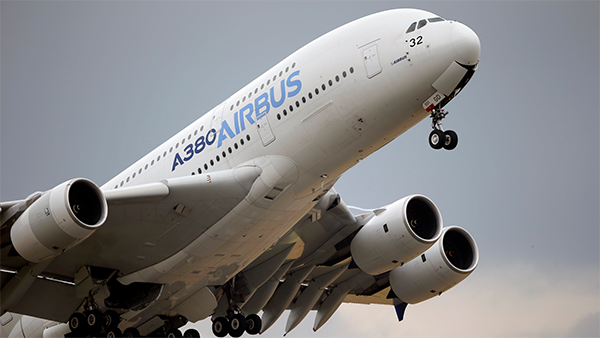Europe’s airport passenger traffic last year fell to levels last seen in 1995 as the COVID-19 pandemic took its toll on the aviation industry.

The continent’s airports lost 1.72 billion passengers last year compared to 2019, a decrease of 70.4 percent according to a study by ACI Europe. (Photo: AP)
According to a study by industry trade association Airports Council International Europe (ACI), the continent’s airports lost 1.72 billion passengers in 2020 compared to the previous year, a decrease of 70.4 percent.
“With just 728 million passengers in 2020 compared to 2.4 billion passengers in the previous year, Europe’s airports were back to their traffic levels of 1995,” said ACI Europe’s director-general Olivier Jankovec.
The aviation sector has been one of the hardest hit during the pandemic. A mix of lockdown measures, travel bans and quarantine periods has meant many of Europe’s flights have been halted or running with little demand.
Airlines and airports have called for further government support in order to survive, while some have even urged for some of the measures to be eased, allowing people to travel more freely again.
Jankovec also doesn’t believe the current levels of support will be enough.
“No industry can on its own withstand such a shock,” he warned. “While some states have taken steps to financially support their airports, only $2.66 billion has so far been earmarked for that purpose in Europe. This is less than 8 percent of the revenues airports lost last year.”

In 1995, the Boeing 747 jumbo jet ruled the skies. (Photo: AP)
Backgrounder: Aviation, 1995-style…
So what was the business of flying like 26 years ago, when traffic was last at these levels?
In 1995, low cost airlines EasyJet and Ryanair were both in their infancies. In fact EasyJet was founded in that year, with its first flight from the UK’s London-Luton airport to Glasgow in Scotland in November of the same year. Its fleet now comprises over 300 aircraft flying between routes all over the Europe. Irish company Ryanair had a fleet of 11 aircraft, all of them Boeing 737s. It now operates more than 470 aircraft and is one of the largest airlines on the continent.
British Airways was still calling itself ‘the world’s favourite airline…’ in its advertising campaigns – largely carried on television, considering that in 1994 only 1 percent of UK citizens had internet access – and Concorde was still flying high in the sky. Elsewhere Air France and Dutch-based KLM hadn’t yet merged.
Aside from Concorde, it was the Boeing 747 jumbo jet that ruled the skies. There were no A380s or 787 Dreamliners, while the 777 airline was only introduced in 1994 and still finding its feet in the industry.
EU airports hit hardest in 2020
Airports within the European Union, which lost 1.32 billion passengers in 2020 compared to 2019 (down by 73 percent) were significantly more impacted than those not within the bloc, which lost 400 million passengers, down by 61.9 percent year-on-year.
According to ACI Europe, the difference between EU and non-EU airports became apparent in the second half of 2020, with a reduction of passenger numbers at EU airports dropping by 83.8 percent and non-EU airports by 63.9 percent.
The better performance of the non-EU market, which only fell by 39.8 percent year-on-year in Q4, compared to a drop of 72.9 percent at EU airports, was mainly down to the resilience of domestic passenger travel and the different strategies implemented to slow the spread of COVID-19 according to the study.
However, non-EU airports (-78.2 percent) also outperformed EU ones (-86.6 percent) for international passenger traffic.
Passenger traffic at airports in Austria, Czechia, Finland, Hungary, Ireland, Slovenia and Slovakia all fell by 90 percent year-on-year in Q4 while airports in France, Greece, Portugal and Bulgaria all slightly outperformed the EU average.
Outside the EU, passenger traffic in Russia was down by only 44.2 percent in Q4 compared to 2019, while airports in Iceland (-96.2 percent) and Georgia (-94.8 percent) were especially Impacted by the pandemic.
Cre: CGTN
Nguyen Xuan Nghia – COMM
Warning: Illegal string offset 'cookies' in /home/u623323914/domains/eng.bayviet.com.vn/public_html/wp-includes/comment-template.php on line 2564